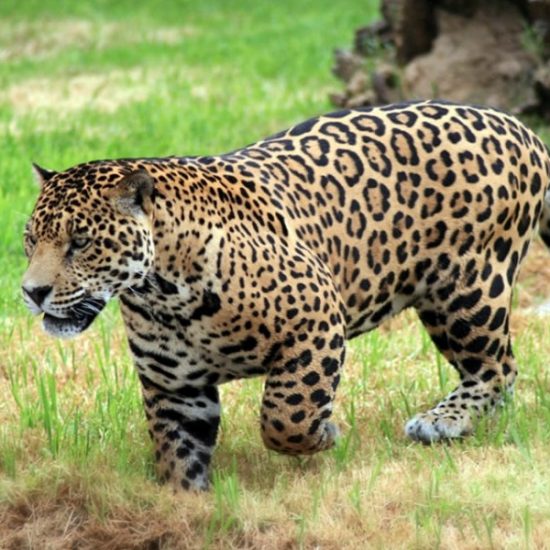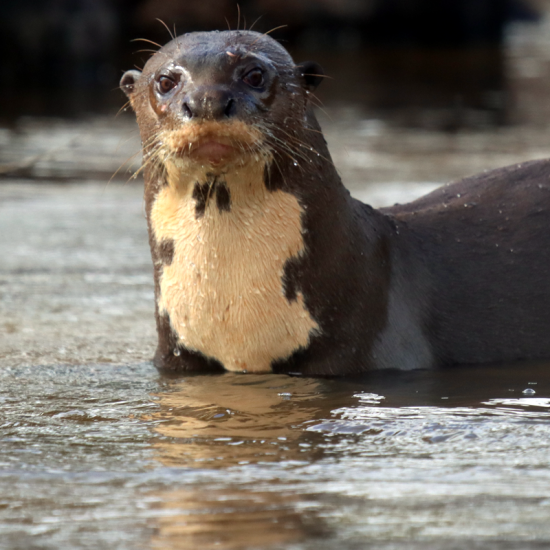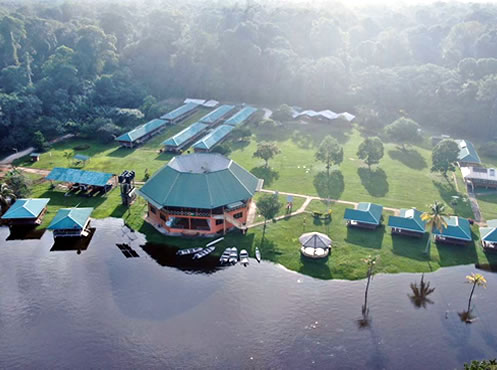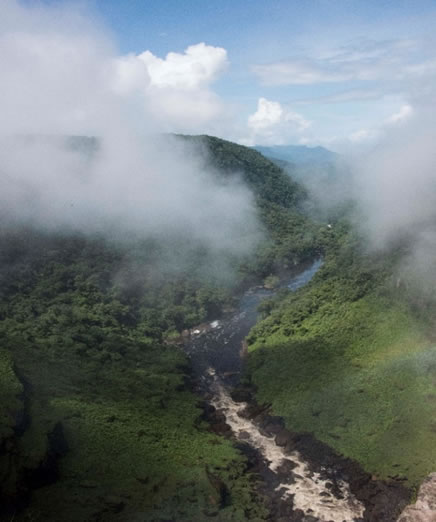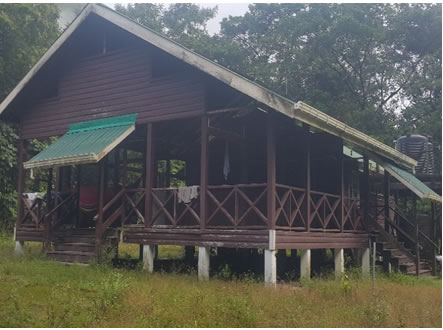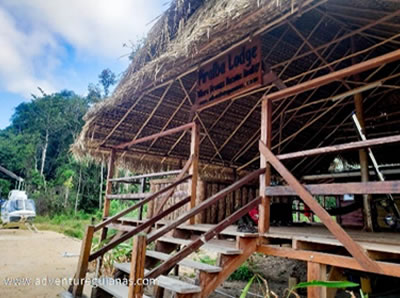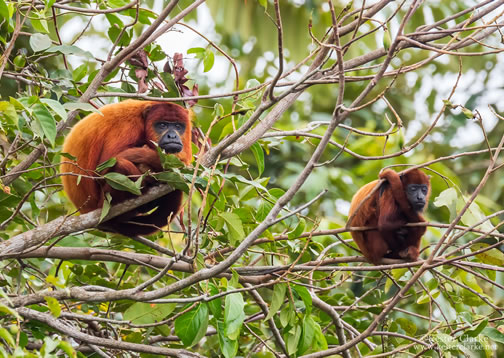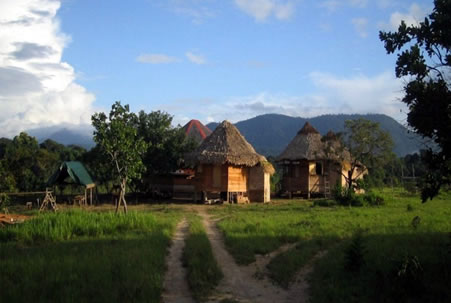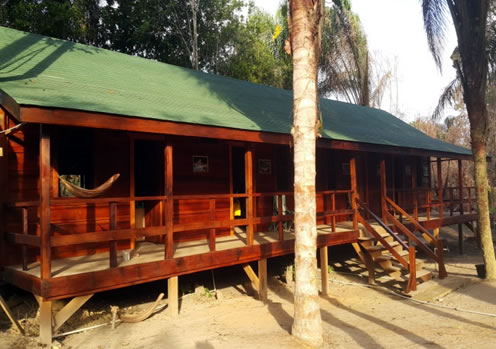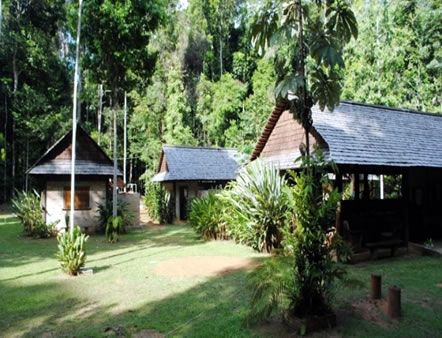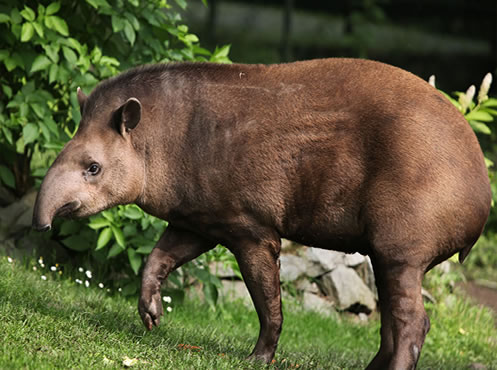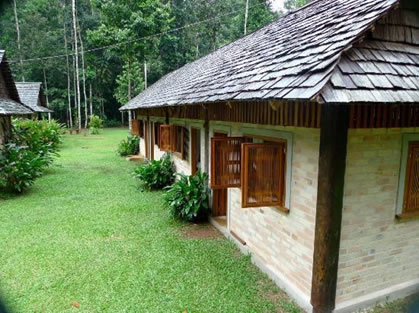Guyana Adventure & Nature Experience
$6195 per person
Guyana Adventure & Nature Experience combines the Pakaraima Mountains, the Iwokrama Rainforests and the Rupununi Savannahs & Wetlands to offer the most unique experience of this corner of South America. From the melting pot of the Caribbean to the untouched rainforests and lush savannahs, we bring you the best of Guyana, voted the number one eco- tourism destination. It combines the Trek to Kaieteur Falls, with all the major Tourist destinations in Guyana.
Download and print -:- Guyana Adventure & Nature Experience Itinerary.
Minimum Group Size -:- 2 Persons.
Included:
-
- Arrival and departure transfers
- Domestic flights
- All accommodation
- Services of English speaking guides – please note that you will have a different guide in each place on the itinerary, rather than the same guide throughout the trip
- Meals as listed (B – Breakfast, L – Lunch, D – Dinner)
- Entrance fees for sites listed as part of the itinerary
Excluded:
-
- International flights
- Any airport taxes
- Travel Insurance
- Visas
- Drinks
Day 1: Arrival Guyana
Arrive in Georgetown, Guyana’s capital and transfer to your hotel. Overnight at Cara Lodge or similar.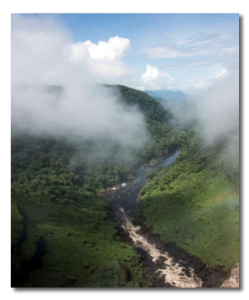
Georgetown:
Located on the coast, Georgetown is Guyana’s largest city and has a distinctly Caribbean feel to it, interspersed with its colonial British, French and Dutch heritage. The city was founded in the 18th century but did not become the capital until it was captured by the French in 1782, only to fall into British hands thirty years later. It owes its existence to the fertility of its soil – early settlers found this to be an ideal region for establishing plantations, and reclaimed what had been floodplains through the building of dykes and canals. Georgetown’s streets are laid out in a grid pattern and contain many interesting historic buildings dating back to the 19th century, as well as some colourful markets.Day 2: Fly to Mahdia onto Amatuk, Waratuk & Tukeit Guest House, Kaieteur National Park
Pick up at 07.00 hrs for flight at 08.30 hrs to the Township of Mahdia, where the majority of the population are gold and diamond seekers, locally called “Porknockers”. Here, we meet our Patamona Guides (one of our nine Amerindian Tribes that lives in the Pakaraima Mountains). Continue by 4*4 vehicle for the 5 miles (7.5 kms) of rough terrain onto the Potaro River  (Pamela Landing), After loading our stuff into the boat we set off along the wining Potaro River, where most of its water would have cascaded over Kaieteur Falls, making its way into the Mighty Essequibo, arriving at Amatuk Falls, where there is a small transient Community. After a short trek around Amatuk Falls, continue by boat and trekking (depending on the weather, swollen interlocking rivers etc), to Waratuk Falls, the Lower Boundary of Kaieteur National Park. Here the boat is portaged above Waratukand boating/trekking continues to Tukeit, the foot of Kaieteur Mountain, where the Kaieteur Gorge empties into the Potaro River, and where the Queens Rest House was once located. A refreshing dip into the River and dinner will send you into bed for a comfortable sleep in the Tukeit Guest House, utilizing hammocks or limited beds (BLD)
(Pamela Landing), After loading our stuff into the boat we set off along the wining Potaro River, where most of its water would have cascaded over Kaieteur Falls, making its way into the Mighty Essequibo, arriving at Amatuk Falls, where there is a small transient Community. After a short trek around Amatuk Falls, continue by boat and trekking (depending on the weather, swollen interlocking rivers etc), to Waratuk Falls, the Lower Boundary of Kaieteur National Park. Here the boat is portaged above Waratukand boating/trekking continues to Tukeit, the foot of Kaieteur Mountain, where the Kaieteur Gorge empties into the Potaro River, and where the Queens Rest House was once located. A refreshing dip into the River and dinner will send you into bed for a comfortable sleep in the Tukeit Guest House, utilizing hammocks or limited beds (BLD)
Day 3: Tukeit to Kaieteur
After breakfast, the most challenging part of the trip awaits you- “the Oh my God Hike” to Kaieteur Plateau some 1,800 ft (560 meters) above sea level. For the most part, is a gradual ascend, and other, a step and tedious climb, which can take between 2-4 hours depending on your fitness level, before being rewarded with the shear awe of the majestic Kaieteur Falls (World’s largest 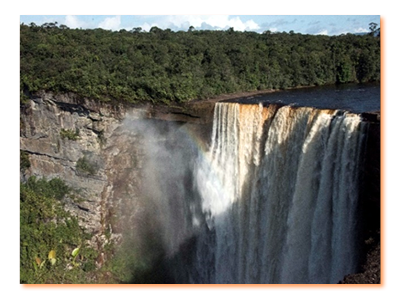 Single Drop Water Falls)- Kaieteur is nearly five times the height of Niagara Falls. Here we hope to find White-chinned and White-tipped Swifts swirling over the gorge, and the astonishingly colorful Guianan Cock-of-the-Rock; the Kaieteur Guest House offers either hammocks or limited rooms with beds. (BLD)
Single Drop Water Falls)- Kaieteur is nearly five times the height of Niagara Falls. Here we hope to find White-chinned and White-tipped Swifts swirling over the gorge, and the astonishingly colorful Guianan Cock-of-the-Rock; the Kaieteur Guest House offers either hammocks or limited rooms with beds. (BLD)
Day 4: Kaieteur Falls & Iwokrama River Lodge
This 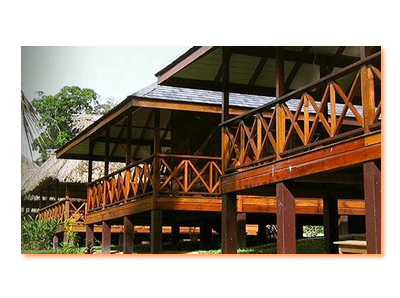 morning, explore the unique flora and fauna, some of which are endemic to this area, witness the Swifts leaving their habitats (only possible with an overnight stay). Afterwards , fly to Iwokrama, an incredible region of rainforest with a breathtaking diversity of species. Iwokrama offers one of the best opportunities to see Jaguar in the wild. This afternoon is free to explore the trails with a ranger, and later we take a night boat trip to look for Caiman and other nocturnal creatures. Overnight at Iwokrama River Lodge. (BLD)
morning, explore the unique flora and fauna, some of which are endemic to this area, witness the Swifts leaving their habitats (only possible with an overnight stay). Afterwards , fly to Iwokrama, an incredible region of rainforest with a breathtaking diversity of species. Iwokrama offers one of the best opportunities to see Jaguar in the wild. This afternoon is free to explore the trails with a ranger, and later we take a night boat trip to look for Caiman and other nocturnal creatures. Overnight at Iwokrama River Lodge. (BLD)
Kaieteur Falls is a spectacular site, five times higher than Niagara Falls, and one of the most powerful waterfalls in the world. First seen by Europeans in 1870 it was known to indigenous people before this – the legend is that it was named after a great chief. Although there are taller and wider falls, Kaiteur’s distinction comes from its combination of both volume of water and height.
Iwokrama:Iwokrama Forest covers nearly a million acres and is home to a bewildering array of different species. Its name means ‘place of refuge’ in the language of the Makushi Amerindians, who retreated here to avoid the predations of the slave trade. 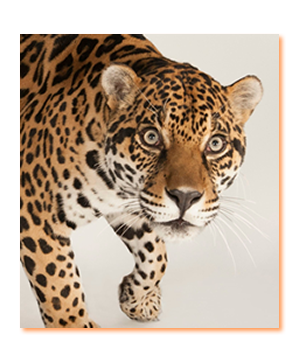 Iwokrama was established as a centre for the study of the rainforest and has been set aside to promote sustainable tourism within the region. Wildlife here includes Jaguar, Caiman, Howler and Spider Monkeys, rodents such as Pacas and Agoutis, and Peccaries among numerous other species. The birdlife here is equally spectacular, with Toucans, Macaws, Hummingbirds and the sought after Guianan Cock-of-the-Rock.
Iwokrama was established as a centre for the study of the rainforest and has been set aside to promote sustainable tourism within the region. Wildlife here includes Jaguar, Caiman, Howler and Spider Monkeys, rodents such as Pacas and Agoutis, and Peccaries among numerous other species. The birdlife here is equally spectacular, with Toucans, Macaws, Hummingbirds and the sought after Guianan Cock-of-the-Rock.
Day 5: Turtle Mountain Hike & Adventure Guianas Piraiba Lodge
After breakfast, you will leave the river lodge for the journey to Turtle Mountain, and an exhilarating climb up the mountain to its summit at 935ft (approx. 360m). It takes 1 3/4hrs to walk up the mountain, but the effort is more than worth it for the breathtaking views over the forest canopy when you get there and chances of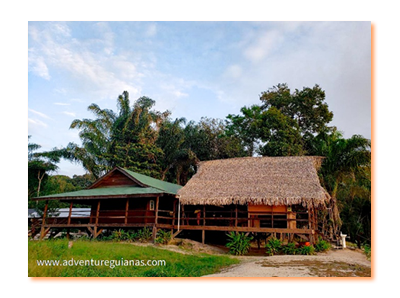 Green Aracari, White Bellbird or a fly-by of one of five types of Eagles. This trail is also a great location for seeing Black Spider Monkey and Red Howler Monkey and if we are very lucky even a Jaguar. This pristine forest offers huge buttress trees and the endemic Greenheart, a highly sought after hardwood. Return to the River Lodge for lunch. After lunch, we will transfer you by boat to Adventure Guianas Piraiba (Lau Lau) Lodge, which is situated on the Eastern Bank of the Essequibo River, deep into the Jungles of Guyana. Piraiba Lodge offer guests a mixture of comfort and rusticity, surrounded by pristine rainforest, full of wildlife. Named after the largest freshwater cat fish species of South America, the Piraiba or Lau Lau, because of its proximity to their habitats, the Lodge is constructed primarily from one of our finest and most durable of wood specie-the Green Heart. This evening we would do a bit of fishing whilst observing the several species of macaws, toucans etc returning to their habitats to sleep. After dark, we’ll set out on the river, in hopes of finding the Black Caiman or another of its four species, and listen for night birds such as Spectacled Owl, White-winged Potoo, Rufous Potoo, Long-tailed Potoo, Zigzag Heron or Blackish Night Jar and one or another of the four species of caiman -Overnight Piraiba Lodge (BLD)
Green Aracari, White Bellbird or a fly-by of one of five types of Eagles. This trail is also a great location for seeing Black Spider Monkey and Red Howler Monkey and if we are very lucky even a Jaguar. This pristine forest offers huge buttress trees and the endemic Greenheart, a highly sought after hardwood. Return to the River Lodge for lunch. After lunch, we will transfer you by boat to Adventure Guianas Piraiba (Lau Lau) Lodge, which is situated on the Eastern Bank of the Essequibo River, deep into the Jungles of Guyana. Piraiba Lodge offer guests a mixture of comfort and rusticity, surrounded by pristine rainforest, full of wildlife. Named after the largest freshwater cat fish species of South America, the Piraiba or Lau Lau, because of its proximity to their habitats, the Lodge is constructed primarily from one of our finest and most durable of wood specie-the Green Heart. This evening we would do a bit of fishing whilst observing the several species of macaws, toucans etc returning to their habitats to sleep. After dark, we’ll set out on the river, in hopes of finding the Black Caiman or another of its four species, and listen for night birds such as Spectacled Owl, White-winged Potoo, Rufous Potoo, Long-tailed Potoo, Zigzag Heron or Blackish Night Jar and one or another of the four species of caiman -Overnight Piraiba Lodge (BLD)
Day 6: Adventure Guianas Piraiba Lodge
This morning we would set out on a boat ride further up the mighty Essequibo River, amidst lots of birdlife, hoping to see the Capybara, Giant Otter, Tapir, Primates (common are the Red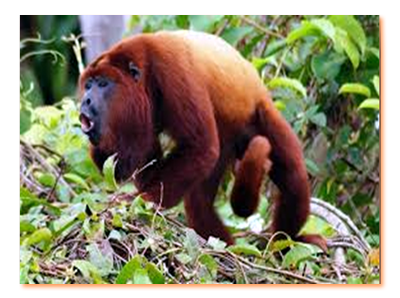 Howler, Spider, Capuchins & Squirrel Monkeys) and even the elusive Jaguar, maybe feasting on a Giant River Turtle or Caiman or just swimming from one bank to the other. After lunch we will take a guided walk through one of our nature trails, hoping to see the Gray Brocket Deer and other wildlife. The river in front of the lodge is great for swimming & canoeing. Overnight AG Piraiba Lodge (BLD)
Howler, Spider, Capuchins & Squirrel Monkeys) and even the elusive Jaguar, maybe feasting on a Giant River Turtle or Caiman or just swimming from one bank to the other. After lunch we will take a guided walk through one of our nature trails, hoping to see the Gray Brocket Deer and other wildlife. The river in front of the lodge is great for swimming & canoeing. Overnight AG Piraiba Lodge (BLD)
Piraiba Lodge is situated on the Eastern Bank of the Essequibo River, approximately 20 miles (32 kms), south of Iwokrama River Lodge, deep into the Jungles of Guyana. Named after the largest freshwater cat fish species of South America, the Goliath catfish, Piraiba or Lau Lau, the Lodge is constructed primarily from one of our finest and most durable of wood specie-the Green Heart and is powered by a photovoltaic system (solar system). Our spacious self-contained rooms containing two beds each, provides a mixture of comfort and rusticity, surrounded by pristine rainforest, full of wildlife. Activities include fishing, wildlife and birding tours, trekking, canoeing, swimming and more. Additionally, our service includes a full complement of meals, unlimited refreshments (water, juice, sodas, rum etc), daily laundry and free Wi-Fi.
Day 7: Iwokrama Canopy Walkway & Atta Lodge
Our day starts with a dawn wildlife walk, and afterwards we will transfer to a 4WD vehicle to travel along one of the best trails for seeing Jaguar. Sightings cannot be guaranteed but if you are very lucky you may see one of Guyana’s most elusive creatures. We then head to the Iwokrama Canopy Walkway, 35 metres up into the canopy, for a different perspective of the forest. Overnight at Atta Rainforest Lodge. (BLD)
Canopy Walkway, 35 metres up into the canopy, for a different perspective of the forest. Overnight at Atta Rainforest Lodge. (BLD)
Canopy Walkway & Atta Lodge:The Iwokrama Canopy Walkway is situated at Mauisparu, 73kms south of the Iwokrama Field Station & River Lodge. The walkway has four suspension bridges leading to three platforms, the highest of which extends 30 metres above the forest floor and provides a good opportunity to see species such as Painted Parakeet, Rufous-throated Sapphire, Guianan Puffbird, Green Aracari, Waved Woodpecker, Pygmy Antwren, Guianan Streaked-Antwren, Dusky Purpletuft, Purple-breasted Cotinga, Guianan Toucanet, Pompadour Cotinga, Buff-cheeked Greenlet, Caica Parrots, and a host of crown specialists may come within our view. From this tree top vantage you can sometimes see Red Howler Monkeys and Black Spider Monkeys.
Day 8: Iwokrama Canopy Walkway & Atta Lodge
Enjoy a full day exploring the forest around Atta Lodge, and also the clearing around the lodge, where you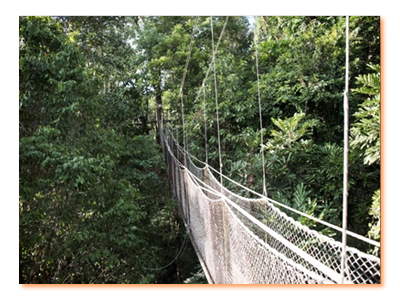 will have an excellent chance of spotting the Crimson Fruit Crow. Overnight at Atta Rainforest Lodge (BLD)
will have an excellent chance of spotting the Crimson Fruit Crow. Overnight at Atta Rainforest Lodge (BLD)
Day 9: Surama Amerindian Village & Eco Lodgee
Experience the dawn chorus from the canopy walkway, and visit an area renowned for sightings of one of Guyana’s most intriguing birds, the Cock of the Rock. We then continue to the Amerindian village  of Surama, where a local guide will give us a tour of the forest and the village, with an opportunity to visit some of the houses, and the local school. This evening we go out to experience the forest at night. Overnight in the basic accommodation at Surama Eco Lodge. (BLD)
of Surama, where a local guide will give us a tour of the forest and the village, with an opportunity to visit some of the houses, and the local school. This evening we go out to experience the forest at night. Overnight in the basic accommodation at Surama Eco Lodge. (BLD)
Surama is a small Makushi village on the savannah with inhabitants still following time-honoured traditions and relying on the jungle for their livelihood. This isolated and idyllic location offers an escape from the concrete jungle to a serene and peaceful existence with nature. Dawn hikes, led by Surama guides across the savannah and up Surama Mountain, reveal a multitude of birds and fantastic vistas. The guides have lived their entire lives in the rainforest, and have an incredible understanding of nature and how to utilise its resources.
Day 10: Surama Amerindian Village & Eco Lodge
Rise before dawn and walk across the savannah in the cool morning air to climb Surama Mountain. This is not a technical climb but can be arduous, and for those who prefer, the local guides can arrange 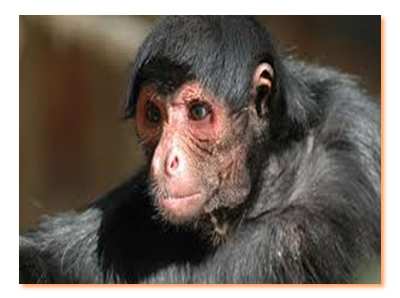 alternative activities. After lunch back at the village we set off this afternoon to walk the three miles to the Burro Burro River for a canoe trip, hoping to spot Giant River Otters, Tapir and Spider Monkeys amongst other wildlife. Overnight in the basic accommodation at Surama Eco Lodge. (BLD)
alternative activities. After lunch back at the village we set off this afternoon to walk the three miles to the Burro Burro River for a canoe trip, hoping to spot Giant River Otters, Tapir and Spider Monkeys amongst other wildlife. Overnight in the basic accommodation at Surama Eco Lodge. (BLD)
Day 11: Karanambu Lodge
Take a walk through the forest to enjoy dawn breaking. After breakfast we travel by 4WD vehicle to the Rupunini River, and take a boat to Karanambu Lodge (depending on the water levels or continue by vehicle to Karanambu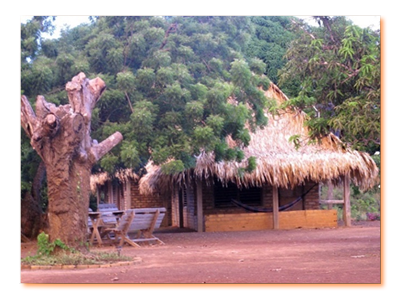 Lodge which was established by the late Diane McTurk. In the late afternoon we take a boat out on the river to look for Giant River Otters and other species. As dusk falls we continue by boat to the ponds to see the giant Amazonia Regis water lily which blooms at this time of day. On the boat ride back a spotlight will be used to search for Black Caiman and other night animals. Overnight at Karanambu Lodge. (BLD).
Lodge which was established by the late Diane McTurk. In the late afternoon we take a boat out on the river to look for Giant River Otters and other species. As dusk falls we continue by boat to the ponds to see the giant Amazonia Regis water lily which blooms at this time of day. On the boat ride back a spotlight will be used to search for Black Caiman and other night animals. Overnight at Karanambu Lodge. (BLD).
Karanambu:
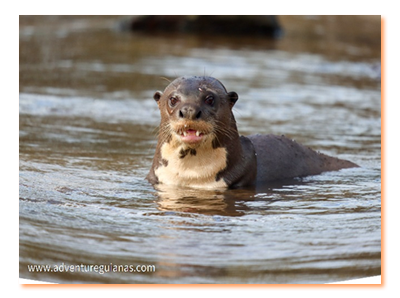 Karanambu Lodge is situated where the north savannah grassland, swamp and flood forest meet on the Rupununi River and the horse flats stretch towards the Pakaraima Mountains and into Brazil. The settlement has the flavour of an Amerindian village, with its clay brick and palm thatched cabanas set in a compound between the bush and the open range. The lodge accommodates guests in five cabanas with verandas; twin bedded rooms and en-suite bathrooms. Meals are served around a large dining table in the open hammock-swagged living room of the main ranch house. Outstanding tropical freshwater fish and teeming bird life abound. The area is also a last refuge for the Giant River Otter and the river reveals Black Caiman and for the lucky, the huge Arapaima, the world’s largest fresh water fish.
Karanambu Lodge is situated where the north savannah grassland, swamp and flood forest meet on the Rupununi River and the horse flats stretch towards the Pakaraima Mountains and into Brazil. The settlement has the flavour of an Amerindian village, with its clay brick and palm thatched cabanas set in a compound between the bush and the open range. The lodge accommodates guests in five cabanas with verandas; twin bedded rooms and en-suite bathrooms. Meals are served around a large dining table in the open hammock-swagged living room of the main ranch house. Outstanding tropical freshwater fish and teeming bird life abound. The area is also a last refuge for the Giant River Otter and the river reveals Black Caiman and for the lucky, the huge Arapaima, the world’s largest fresh water fish.
Day 12: Karanambu Lodge
This morning travel out to an area of rolling grassland which is home to a population of Giant Anteaters There is a good chance of seeing some of these remarkable looking creatures.  During the afternoon you can explore the area around the river to glimpse some of the many birds, and in the evening, walk along the airstrip for the chance to spot some of the seven species of Nightjar that live there. Overnight at Karanambu Lodge (BLD)
During the afternoon you can explore the area around the river to glimpse some of the many birds, and in the evening, walk along the airstrip for the chance to spot some of the seven species of Nightjar that live there. Overnight at Karanambu Lodge (BLD)
Day 13: Caiman House
This morning transfer by boat, birdwatching along the way, to the Amerindian village of Yupukari and Caiman House. Tonight enjoy a foray on the Rupununi River from Caiman House Field Station. As a guest you have the unique opportunity to support and participate in an ongoing field 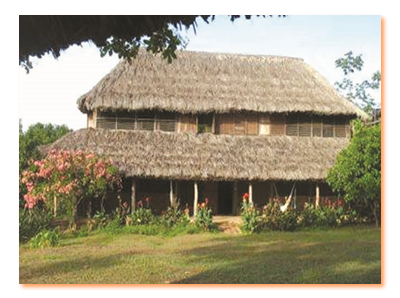 study of the Black Caiman, the largest member of the Alligator family, and an endangered species. If the water level is low enough you will be invited to accompany the indigenous crew as they search for and capture these magnificent reptiles on the river. Overnight at Caiman House. (BLD)
study of the Black Caiman, the largest member of the Alligator family, and an endangered species. If the water level is low enough you will be invited to accompany the indigenous crew as they search for and capture these magnificent reptiles on the river. Overnight at Caiman House. (BLD)
Caiman House:
Caiman House is the hub of several participatory development projects, including the introduction of classroom libraries in all three village schools and an internet-enabled public library. Visitors may have the opportunity to meet local craftspeople, including the furniture builders at Yupukari Crafters, a non-profit venture to create village jobs and generate income to sustain educational development. Tonight enjoy a foray on the Rupununi River from Caiman House Field Station. As a guest you have the unique opportunity to support and participate in an ongoing field study of the Black Caiman (melanosuchus niger), the largest member of the alligator family and an endangered species. Guests will observe the capture from a separate boat, but will be offered the opportunity to assist in data collection. Caiman are weighed, measured, sexed and tagged before being released back into the river. The research has already discovered interesting information on caimans’ nests that was previously unknown. During periods of high water it is difficult to capture Caiman so you will have another chance to enter the nocturnal world of the Rupununi River and associated gallery forests which offer an experience, and world of wildlife entirely different than those viewed on a day trip.Day 14: Return to Georgetown
After breakfast transfer to Lethem for your flight to Georgetown. Lethem, located in the Upper Takutu-Upper Essequibo Region of Guyana is considered the capital of Region 9 and is a hub linking many of the surrounding Indigenous Villages with Georgetown and Boa Vista, the nearest town in Brazil. The recently commissioned Takutu River Bridge links the two countries and offers greater opportunities for trade and commerce. The town is approximately 280 feet above sea level and has a mixed population of approximately 3,500, with a heavy influence of Brazilian Culture. It is named after Sir Gordon James Lethem, who was the Governor of British Guiana from 1941 to 12 April 1947, in the Rupununi Savannahs On arrival enjoy a city tour of the capital. Overnight at Cara Lodge. (B)
Day 15: Onward International Travels
Standard Check List-All may not be applicable
-
- Broad rim or peaked sun hat.
- Lightweight, quick dry, light colored long pants and shirts
- Lightweight socks that dry quickly.
- Shorts, bathing suit, T-shirts (ideally light color cotton)
- Slippers or sandals
- Appropriate boots
- Sunscreen and chap stick
- Insect repellent
- Medications for specific personal conditions (for allergic reactions, heart conditions, digestive disturbances, malaria prevention etc.)
- Calamine lotion or sunburn cream
- Sunglasses (ideally with carrying straps)
- Small personal first aid kit (aspirins, small bandages, rubbing alcohol,antibiotic cream, diarrhea medication, gauze pads and rolls of tape insect cream
- Plastic water bottle
- Backpack
- Personal toiletries (toothbrush, paste, soap, small towel, etc.)
- Small flashlight and extra batteries
- Camera, lenses, films, memory card
- Copy Biographic page of Passport
- Requisite Visas (Check with Respective Embassies).
- Yellow Fever Vaccination Card




